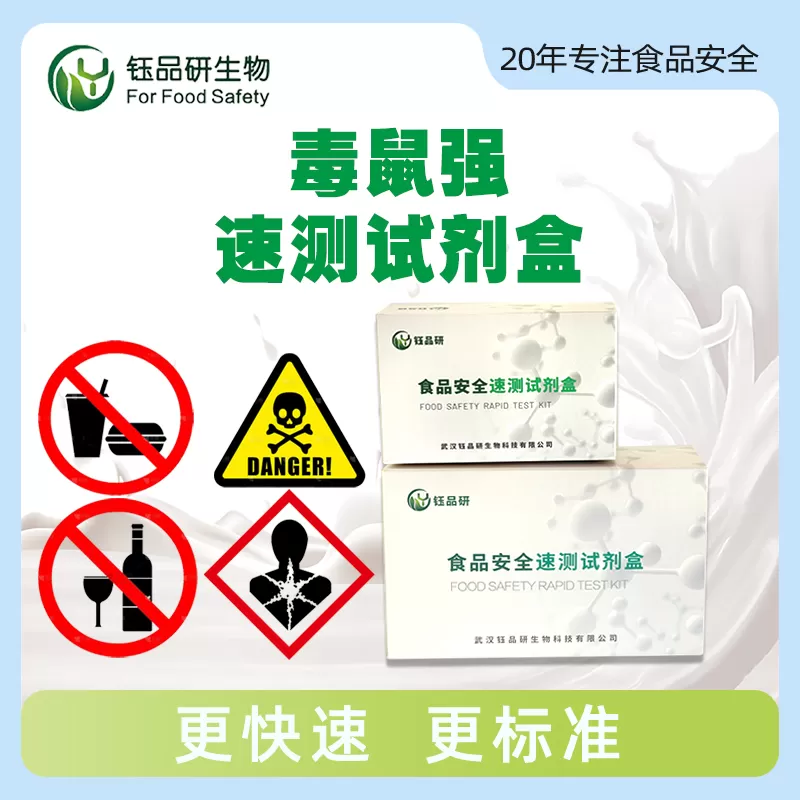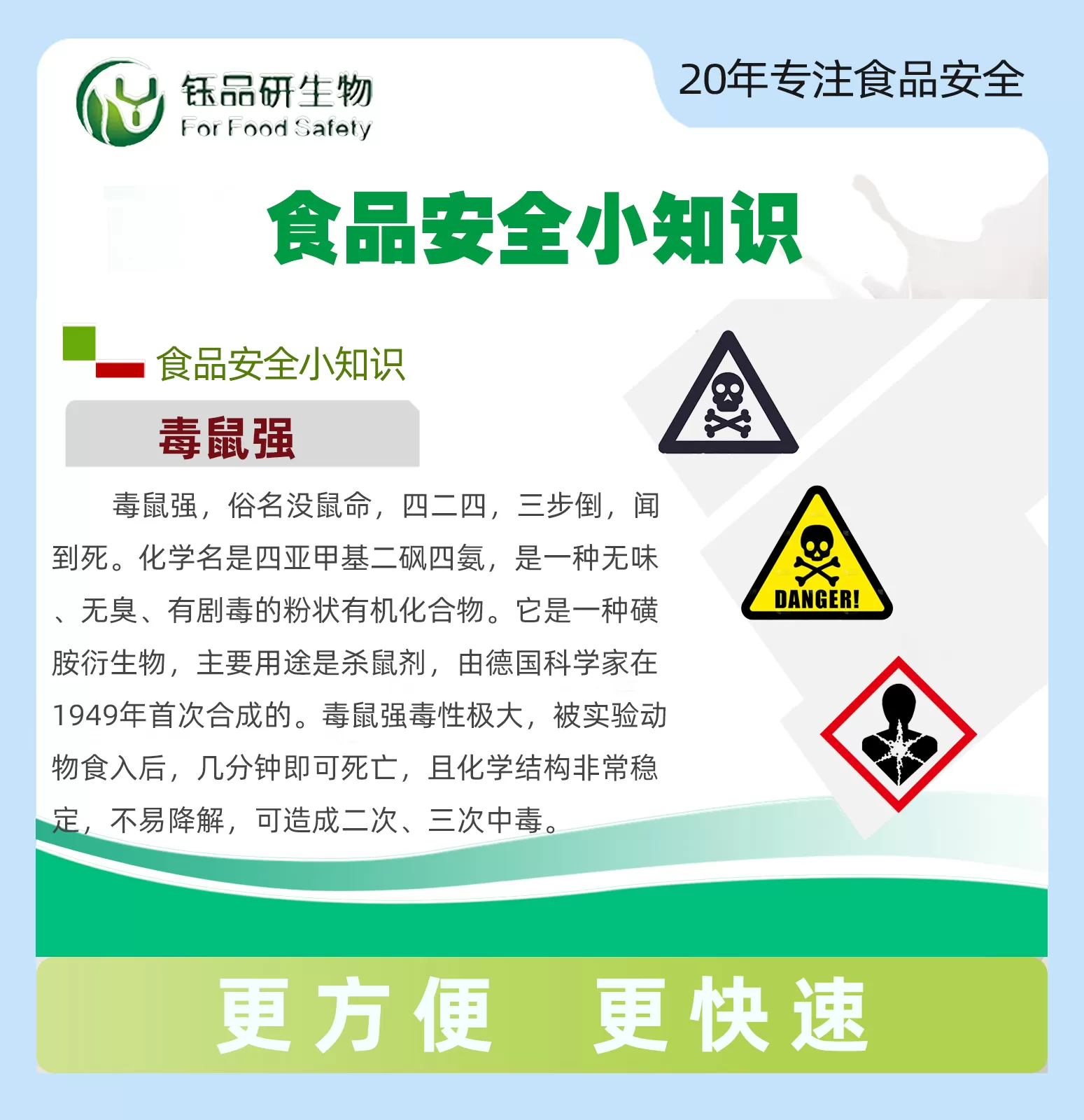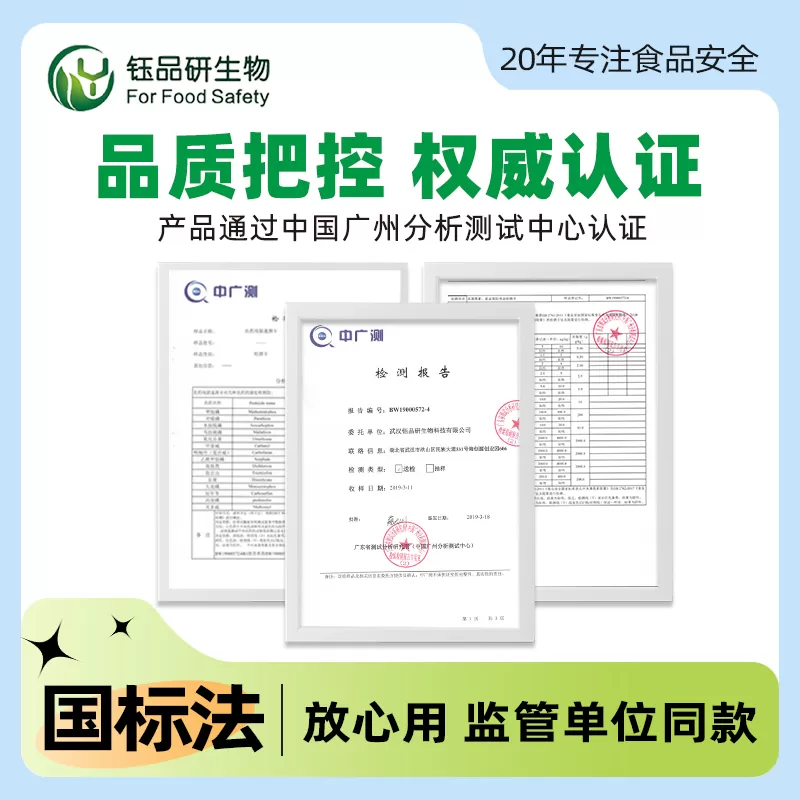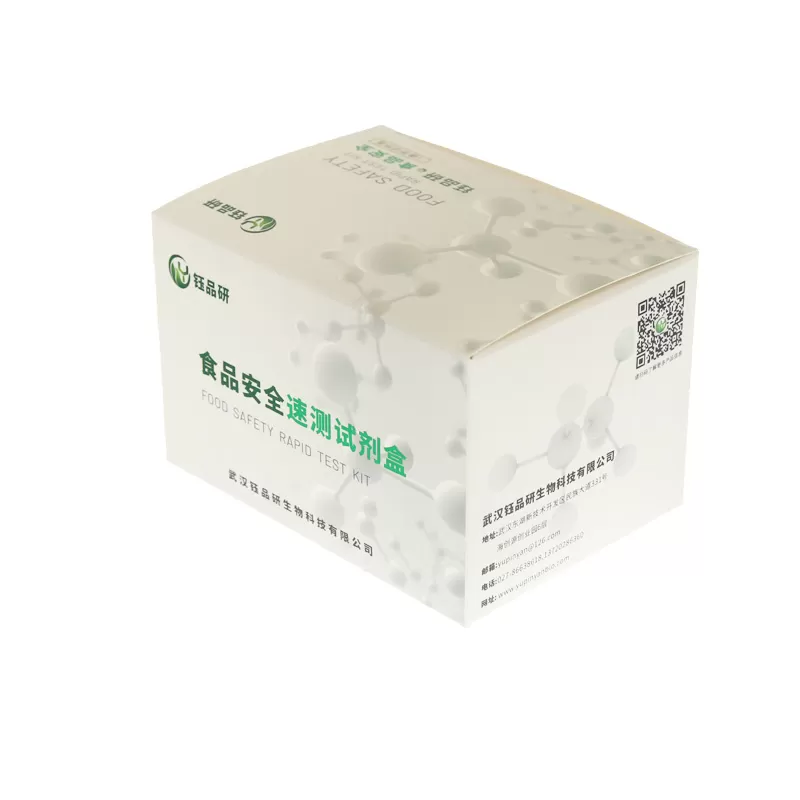Instructions
(version number: V1.0.0)
Product number: YC227A01H
1 Introduction
Toxic rat is strong, the common name is no rat life, 424, three steps down, smell dead. The chemical name is tetramethylene disulfone tetraammonia, which is an odorless, odorless and highly toxic powdery organic compound. It is a sulfonamide derivative, the main use is rodenticide, first synthesized by German scientists in 1949. Toxic rat is extremely toxic, after being eaten by experimental animals, it can die in a few minutes, and the chemical structure is very stable, not easy to degrade, can cause secondary and tertiary poisoning.
2 Detection principle
Toxic rat reacts with the reagent under heating conditions to form a purple compound, and the color depth is positively correlated with the content of toxic rat.
3 Detection range
Suspected poisoning of food, water and toxic residues.
4 Technical indicators
Lower limit of detection: 2μg/mL
5 Sample determination
5.1 Drinking water or colorless liquid: Take 6 drops (about 0.15mL) of sample into a 5ml centrifuge tube, add 1 drop of reagent A, carefully add 15 drops of reagent B, shake gently, put the centrifuge tube into a 90 ° C water bath pot, heat it for 5 minutes, take it out, and observe the color change. The test solution without tetramine strong is yellow, and the solution containing tetramine strong will appear lavender color. With the increase of tetramine strong concentration, the purple color deepens. At the same time, a negative blank control test is done with purified water. When conditions permit, a positive control test can be done with tetramine strong control solution.
5 Colored liquid, solid or semi-solid sample: take 2mL (g) sample into a 10 ml centrifuge tube, add 5mL of ethyl acetate, fully shaken, let stand, take 2mL supernatant in the centrifuge tube or on the surface dish, heated in a water bath at about 85 ° C, when the remaining 1mL of ethyl acetate is below, raise the water bath temperature to dry the residual liquid, put it to room temperature, add 1mL of purified water to fully dissolve the residue, take 6 drops from it into a 5 ml centrifuge tube, add 1 drop of reagent A, carefully add 15 drops of reagent B, shake gently, put the test tube into a 90 ° C water bath, heat it for 5 minutes and take it out, observe the color change. The test solution without tetramine is yellow, and the solution containing tetramine will appear lavender. With the increase of the concentration of tetramine, the purple will deepen. At the same time, a negative blank control test is done with purified water. When conditions permit, a positive control test can be done with tetramine strong control solution.
6 Precautions
6 Some aldehyde-containing substances interfere with the detection of this method. When the test is positive, further confirmation should be made.
6 This method is not suitable for the determination of blood and tissue and organ samples.
6.3 The reagent is corrosive, and safety should be paid attention to during operation. If it accidentally touches the skin, rinse with water immediately.
6.4 This product is only used for initial screening, and the final result is subject to the relevant national standard methods.
7 Storage conditions and valid period
Reagents are stored in a cool and dry place at 4-30 ° C, protected from light, and the valid period is 12 months.
8 Kit packing list
Specifications: 20 samples/box
Name
Quantity
Unit
Remarks
Reagent A
1
bottle
reagent B
1
bottle
straw
1
bag
Repeated after cleaning
10ml centrifuge tube
1
bag
Repeated after cleaning
5ml centrifuge tube
1
bag
Repeated after cleaning
Instructions
1





